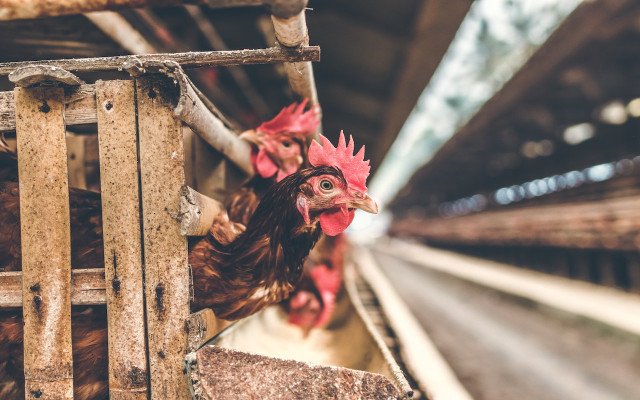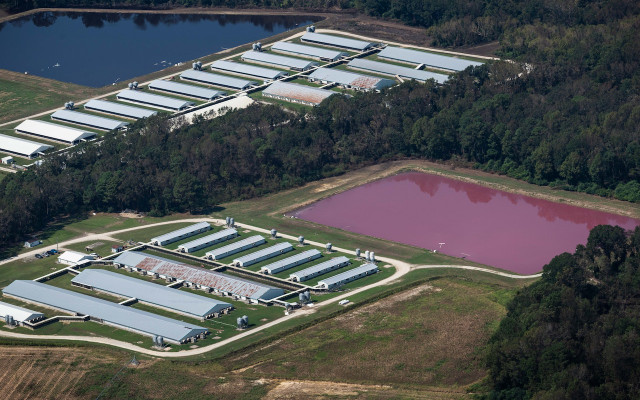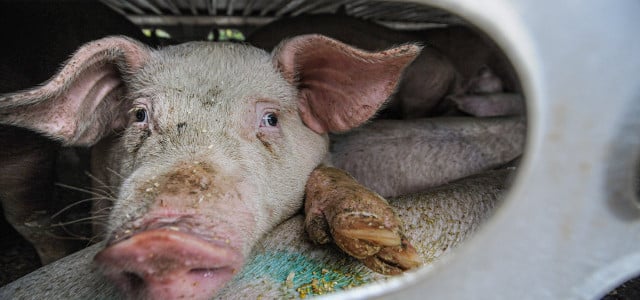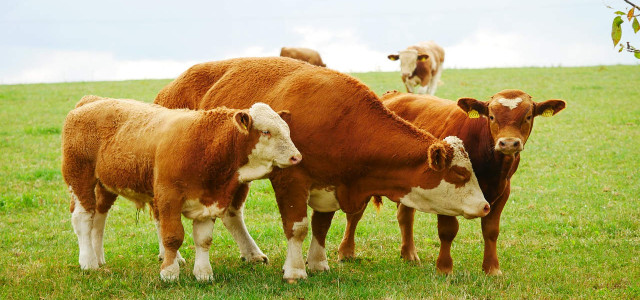Animals aren’t the only ones that suffer as a result of factory farming; the environment and human health are also affected. We’ll take a look at how industrial farming practices are problematic and what you can do to help.
The fact is, Americans love their meat. As one of the biggest meat-eating nations in the world, the average American eats 225 pounds of meat per year. That seems a bit excessive, especially considering where the meat is coming from. According to PETA, 99% of the animals used for food production in the United States are a product of factory farming. We’ll take a quick look at what that means, exactly.
What is Factory Farming?
If you’ve never heard of factory farming before, you may be in for quite a shock. Also known as concentrated animal feeding operations (CAFOs), factory farms are an industrial method of raising livestock. The goal of factory farming is high production with low costs. As with any business that aims for high profits with low costs, someone along the supply chain pays… in this case it’s the animals that foot the bill. Animals are crammed into small spaces, often live in filth, and are treated with antibiotics to ensure diseases don’t spread within the factory farm.
But CAFOs aren’t just an American phenomenon: in fact, they exist all over the globe. And as the global population rises and the demand for meat increases, more and more of these types of farms will be created. That’s why it’s as important as ever to make mindful choices of what you are consuming. We only have one planet, so how we treat it (and everything on it) matters.
Inhumane Treatment of Animals in CAFOs

Generally speaking, any meat you find in a supermarket or can purchase through a fast-food chain is a product of factory farming. While each species is treated differently, none of them are treated particularly well. Animals raised purely for meat production typically live very short lives — some animals live only a few months before being sent off to the slaughterhouse. Additionally, they are often fed genetically modified food so that they gain the most amount of weight in the shortest amount of time. Many are fed so much that their legs can’t support their own body weight, and are in constant pain.
No matter which animal it is, those reared on industrial farms are all subjected to incredibly poor living conditions. They are crammed into small spaces, often without even enough room to turn around, and few ever get to see the light of day until they are shipped off to slaughter. In these industrial farming conditions, animals often end up living in their own filth and excrement for the short amount of time they’re alive, and are pumped full of antibiotics to keep disease from spreading. According to the FDA, approximately 11.4 million kilograms of antibiotics are used on livestock in the US per year, which is about three to four times more than for humans.
Factory-Farmed Poultry
Birds on factory farms are raised for both their eggs and for meat. Due to overcrowded living spaces, CAFO owners debeak their poultry so they can’t harm one another. Some even go as far as to remove their toes. The vast majority of poultry raised in industrial farms remain in their cages for their entires lives, living in their own filth and never even getting the chance to walk around. Most egg-laying hens are kept in battery cages (made completely of wire) for their entire lives, without enough room to stretch their wings. They are also selectively bred to produce the maximum number of eggs. Broiler chickens, on the other hand, are raised exclusively for meat production and are selectively bred to be larger, plumper, and mature faster.
Pigs and Cows in CAFOs
Oftentimes, cows and pigs are put through a process called tail-docking, meaning the fluffy part of their tail is removed. This is done to prevent the pigs from turning violent under the stressful factory farm conditions and biting each other’s tails, which would increase their risk of infection. For cows, it’s done to make milking easier and is said to help prevent certain diseases and improve udder health. Interestingly enough, there have been several scientific studies that show no difference in udder health and hygiene between cows with tails and those without.
Main Issues Related to Industrial Farming



Environmental Issues of Factory Farming
Raising animals for human consumption is a tremendously resource-intensive process. In fact, approximately 80% of deforestation worldwide is driven by agriculture. Land is cleared to grow animal feed like soy, corn, and wheat, or to have room for more cattle ranches. This is an especially large issue in the Amazon rainforest, and our planet cannot afford to lose any more of our tropical rainforest ecosystems. An estimated one-third of all usable land on earth is used for animal agriculture and feed production — just think about how many vegetables could be grown on that amount of land!
The amount of water needed for animal agriculture is also excessive: 5 percent of water consumed in the US is in private homes, while 55 percent is used for animal agriculture. CAFO run-off including waste and pesticides also ends up back in waterways and pollutes the groundwater.
Speaking of pollution, the amount that is produced by factory farming is astronomical. Livestock in the US alone produces 335 million tons of excrement per year, which is far more than can be used to fertilize the crop fields. Fields can also be over-fertilized, adding dangerous amounts of phosphorus and nitrogen to our waterways, which can in turn harm aquatic life. Industrial farming also contributes methane, ammonia, and hydrogen sulfide pollution to the air. This can have detrimental effects on the climate. Read more: Take Action: 15 Everyday Ways to Combat Climate Change
Human Health Issues
Due to the amount of pollution factory farming releases into the environment, it’s natural that human health would be affected by it as well.
- Ammonia causes respiratory irritation and can be linked to lung disease.
- Hormones in meat and dairy products can have negative effects on humans.
- Poor conditions on factory farms are linked to outbreaks of E.coli and salmonella.
- Overuse of antibiotics in meat production might make the human body less receptive to necessary antibiotics.
- The CDC warns that 3 out of every 4 new or emerging infectious diseases in people come from animals.
- People that live in close proximity to industrial pig farms may have decreased life expectancy and increased risk of birth defects.
- Workers in meat packaging factories and slaughterhouses may be at a higher risk for disease, amputation and carpal tunnel syndrome.
Factory Farming: How Can We Fight It?



The first thing you should do is educate yourself further about factory farming practices. This guide barely even scratches the surface of the vast amount of information out there!
- Learn how changing your diet can help reduce your carbon footprint.
- Consider switching to a vegetarian diet, or take it a step further and go vegan.
- If you aren’t ready to make a complete switch, try limiting your meat consumption. Meatless Mondays are a great introduction, and then you can gradually increase to eating vegetarian or vegan 3 or 4 times a week.
- If you don’t want to give up meat, avoid supporting CAFOs by shopping at local, organic farms where you know the animals are raised well.
- Donate to charities that align with your goals of sustainable agriculture
- Sign petitions and attend protests against factory farming practices.
Do you like this post?







